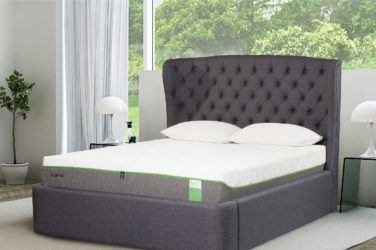In this guide to parquet flooring we find out why it’s a perennial favourite and take a look at some beautiful new colours and designs which are suited to both traditional and modern homes.
What is Parquet?

The origins of parquet flooring date back to the late 1600s in Versailles, France. Handmade by cutting pieces of wood into small, geometric shapes, it emerged as an alternative to marble flooring, with Louis XIV opting for parquet flooring in the splendiferous Palace of Versailles. In the 17th and 18th centuries, it became increasingly popular in Western Europe. In the 20th century, parquet flooring was initially popular in the UK but earned a bit of a bad design rap due to unsympathetic use in 70s and 80s housing treatments. Nonetheless, it’s now having a huge comeback as parquet flooring remains a warm, sturdy and versatile option for modern living areas. Here’s how to take parquet flooring back to its elegant and luxurious origins.
Where can it be used?
According to Jago Anderson, Creative Director at parquet experts element7, “Parquet flooring can be laid anywhere in the house. For thinner spaces, such as corridors and hallways, extra care needs to be taken when fitting to ensure that both sides of the room are equal and balanced. Element7 does this by using a central spin and laying the floor out from that on either side. This ensures complete symmetry. Whilst herringbone has been the most popular design for many years, we are seeing an increased demand for chevrons and mansion weaves.”
Traditional Parquet

Traditional patterns for parquet are generally angular and geometric, as opposed to marquetry, which refers to wood floors that contain curved pieces. Derived from the original “parquet de Versailles”, in which small diagonally laid squares are encased in a box of longer rectangular pieces, most of the classic parquet patterns are variations on herringbone, chevron or diagonally laid wood, often in subtly mixed contrasting shades and grains. Traditionally, it was laid using tongue and groove carpentry, with no nails or glue used. To finish, it is waxed and buffed to a high polish.
Reclaimed Wood Parquet
Reclaimed parquet flooring is typically lifted from old schools, churches and other public buildings. Differences in areas of wear require that planks and pieces be cleaned and resurfaced before the pattern is laid. Oak, teak, and mahogany are popular hardwoods used for parquet; pine is a popular softwood. Reclaimed planks and squares can be laid to traditional patterns or, for a more contemporary look, in more distinctive patterns. Reclaimed parquet can add to a distressed aesthetic if desired, but new products can also be engineered to achieve the look. These guys specialise in reclaimed parquet from schools and colleges for that sitting-crossed-legged-on-the-floor-for-assembly vibe. Reclaimed wood needs more work than new, so be warned! But in return you will get a unique floor with an interesting history.
Parquet flooring can be laid anywhere in the house
Engineered Parquet
Experts say modern heating and air conditioning systems subject wooden flooring to extreme changes in temperature, and non-engineered parquet flooring may react badly. Engineered parquet is made of layers of plywood that are bonded together to create a stable and solid core board. On top of this core board, engineered wood flooring manufacturers place a layer of solid wood and it’s this layer of solid wood that makes engineered wood flooring absolutely real looking. This means that this flooring option can be used throughout the home, even where there are moisture and temperature issues and under floor heating.

Keep in mind that with engineered parquet as with everything, you get what you pay for. That’s why it’s important to source engineered flooring from an experienced supplier and installer. The higher end firms have great ranges and showcase some spectacular floors made from engineered wood laid in traditional patterns, hexagons, mansion weaves and even free-form, one of a kind designs.
The beauty of wood, its grain and colour highlighted by the intricate and often striking patterns of parquet, is always a welcome element in any home. We’ve come across element7 floors specified in so many of the beautiful interiors you see in the magazines and they floors that dreams are made on. And if you fancy going beyond the traditional herringbone pattern, they can do that too.
With time, patience and a good kneepad, you can lay a parquet floor yourself, but if you want a floor to last a lifetime, we say premium materials and expert installation is definitely the way to go when choosing this classic floor treatment.
You May Also Like
- Choosing a New Floor for a Family Home
- Flooring choices for open plan living
- Inside a Renovated Soho Loft Studio
All images are courtesy of element7 who produce a wide range of parquet styles and designs.











Show Comments